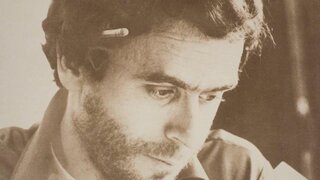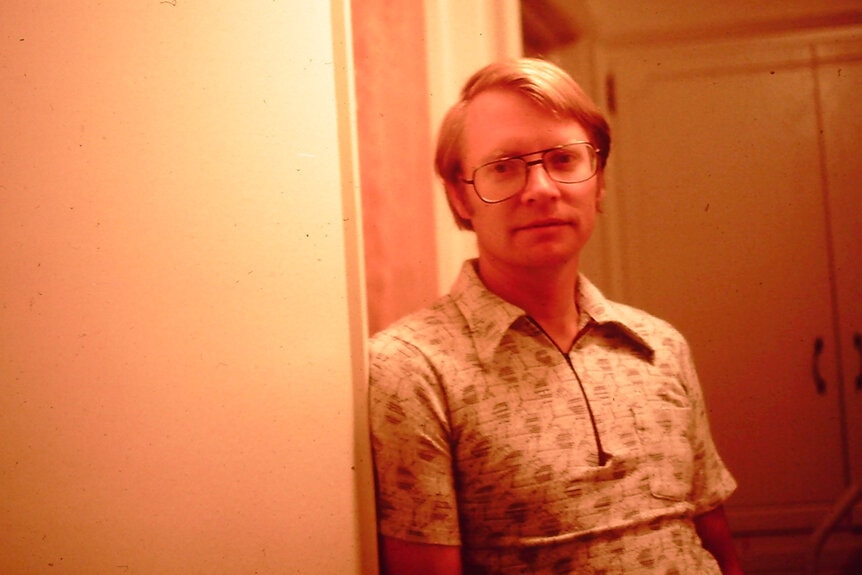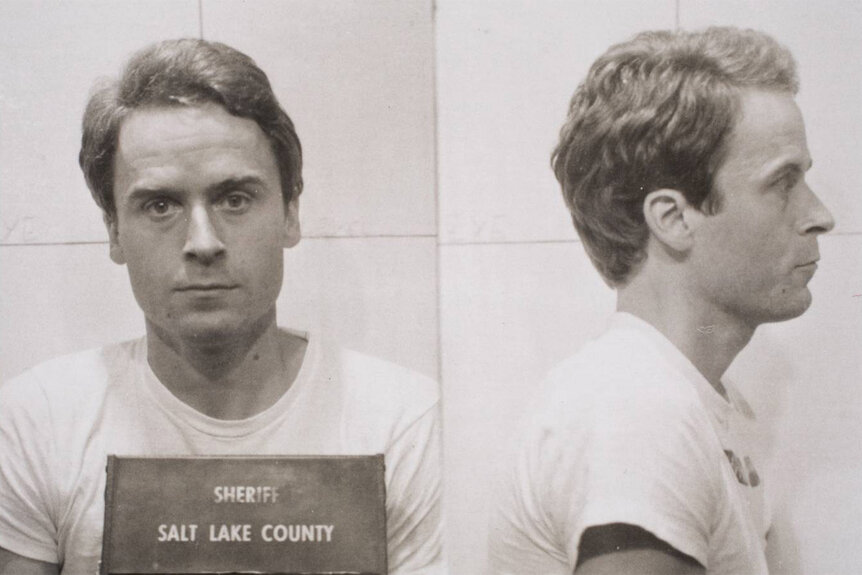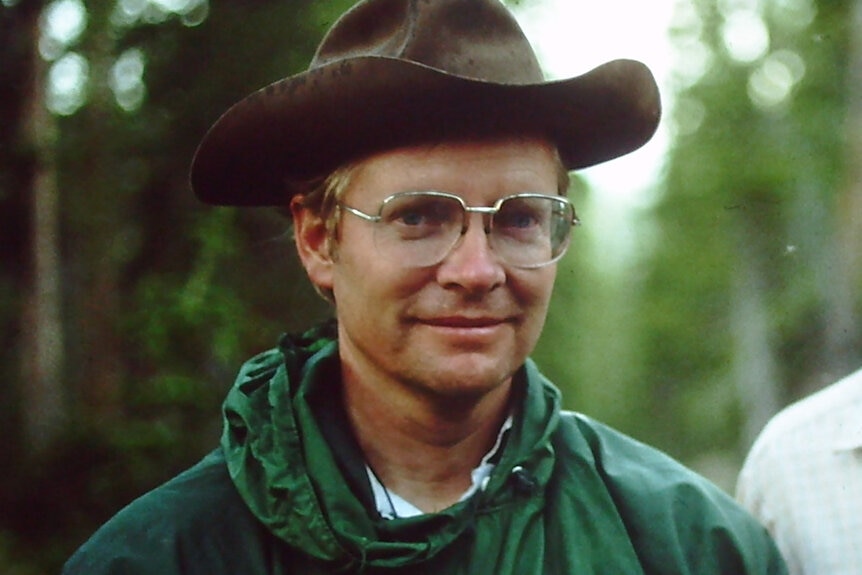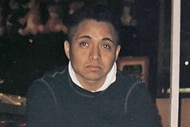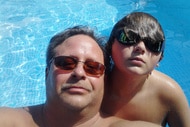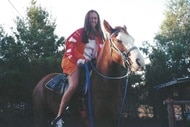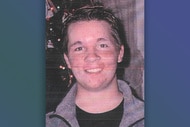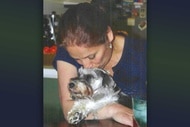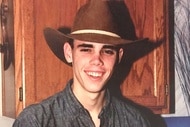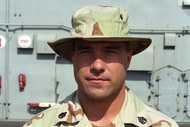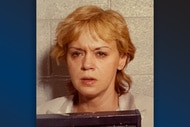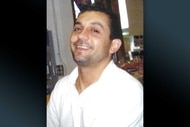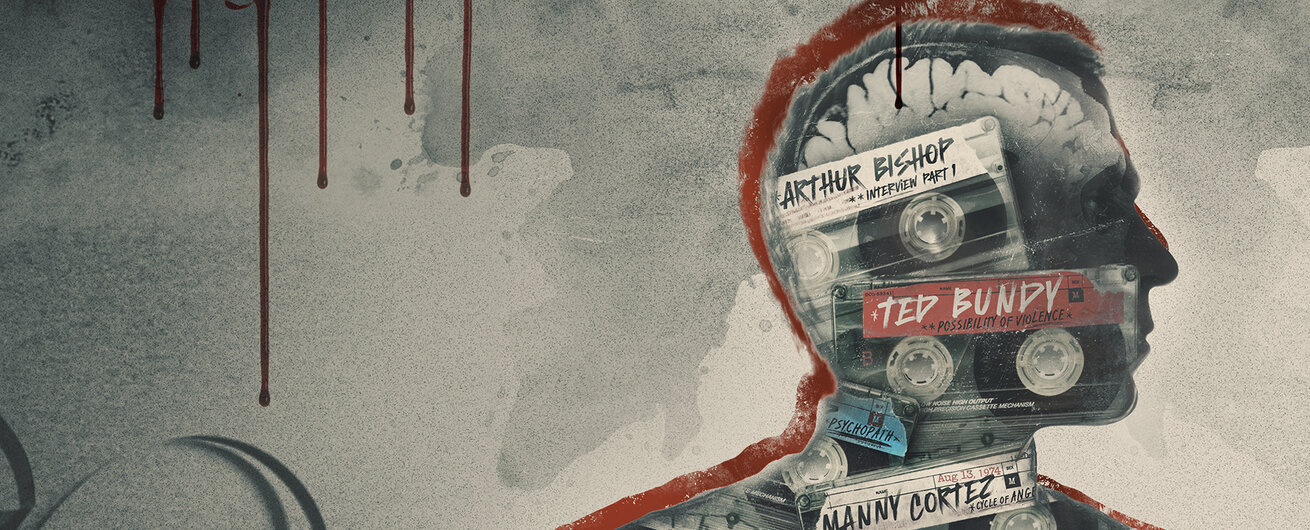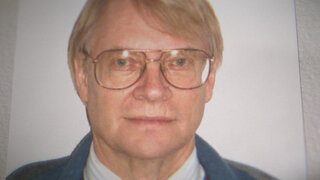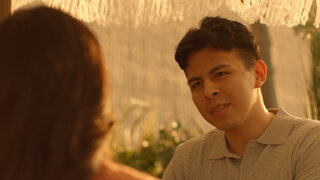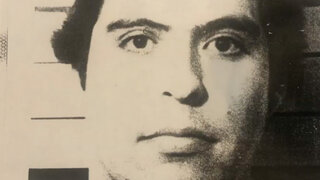Create a free profile to get unlimited access to exclusive videos, breaking news, sweepstakes, and more!
What Did Ted Bundy’s Exes Say About The Serial Killer After His Initial Arrest?
Ted Bundy’s first love told Dr. Al Carlisle as part of a psychological evaluation that she thought Bundy had been “watching” her.
Ted Bundy was once a charismatic law student, but there were hints of the serial killer’s dark side even before his arrest.
Bundy’s former love interests, friends and coworkers all revealed disturbing details of the man suspected of killing at least 30 women as part of a psychological evaluation by Utah State Prison psychologist Dr. Al Carlisle. Carlisle’s recordings, once thought to be lost forever, were recently uncovered by his family after his death and serve as the basis for Oxygen’s new series “Violent Minds: Killers on Tape.”
The recordings reveal terrifying new details about one of the country’s most prolific serial killers.
Carlisle was tasked with conducting a 90-day psychological assessment of Bundy after the killer was convicted in 1976 of kidnapping Carol DaRonch from a Utah shopping mall in 1974. To carry out the attack, the law student posed as a police officer and convinced DaRonch to get into his car by telling her that he had spotted someone trying to break into her car and needed her to file a report at a police substation nearby.
Once inside the vehicle, Bundy slapped handcuffs on her left arm and the panicked teen managed to fight him off and jump from the car. She’s one of few women to encounter the serial killer and live to tell about it.
Yet, when he was linked to the kidnapping in 1975 after he was caught with burglary tools during a traffic stop, no one could have imagined his deadly past.
Many who knew Bundy at the time insisted the personable aspiring attorney could have never carried out such a violent act and Bundy himself insisted he was innocent. To help determine his sentence, the judge in Bundy’s case tasked Carlisle with determining whether Bundy had the propensity for violence as part of the prison’s 90-day evaluation program.
Carlisle conducted a battery of psychological tests on Bundy, but it was soon apparent that Bundy — whose IQ tested in the “superior” range — was capable of out-smarting the traditional tools.
“Ted scored very low on a personality test that measures levels of anger, depression and anxiety, which would indicate no presence of an emotional problem,” Carlisle wrote at the time. “This didn’t seem accurate; however, because the person who is and may be spending a lot of time in prison just doesn’t score this low in all of these areas. Either Ted was telling the truth and he was trouble-free or he was exceptionally good about lying about it.”
To gain a more accurate portrait, Carlisle took the unusual step of talking with Bundy’s mom Louise, girlfriend Elizabeth Kloepfer — now often referred to by her pen name Elizabeth Kendall — former girlfriends and friends about his true nature.
Bundy’s mom Louise insisted that her son’s personality was “pretty much the same” throughout his life.
“He’s always been mature. And we’ve always been extremely proud of him. And he’s a wonderful son,” Louise said in a recording of the call.
But Bundy’s first love, a college girlfriend Carlisle referred to by the pseudonym “Marjorie,” described more unusual traits.
The pair met while they both were in college.
“He was very much in love with her and she is beautiful, she’s intelligent, she’s a year ahead of him in school,” Carlisle said in a 2017 interview.
According to Marjorie, Bundy “hadn’t had much contact with women” before they started dating. The couple often argued after she discovered that he had been lying to her, she said.
“Did you see any other times or any other occasions where his behavior seemed weird or odd?” Carlisle asked.
“Well, he was odd to begin with,” Marjorie replied. “You know, he popped up all the time in weird places.”
She went on to tell Carlisle that Bundy would “just show up on the streets” where she was.
“It was just a weird feeling, you know? Sometimes I felt like he was watching me. I just wasn’t comfortable with the things he did,” she said. “He could have been living three lives and I wouldn’t know it.”
Marjorie eventually ended the relationship.
“He cried, you know? He really cried,” she said of Bundy’s reaction. “I mean, he was really falling apart over me.”
Carlisle would later theorize that this event is what helped push Bundy from fantasizing about violence to carrying it out himself.
“In the time Ted was with Marjorie, he became overly dependent on her. When Marjorie called off the relationship, Ted experienced a very traumatic break-up. It shattered his personality and he was never able to get over it and he became more anxious and depressed than at any time in the past,” Carlisle once wrote.
Kloepfer was more supportive of her long-term boyfriend, describing him to Carlisle as “witty.”
“We’re just so compatible and he was good with my child, Molly,” she said, adding that although she thought he was “unique” she wouldn’t describe him as “unusual.”
But Kloepfer had her own doubts about Bundy too — even if she didn’t share them with Carlisle.
After two women went missing from Lake Sammamish, her coworkers remarked that the “Ted” seen in a sketch developed by witness accounts looked strikingly similar to Bundy, according to her book “The Phantom Prince: My Life with Ted Bundy.” Kloepfer’s suspicions grew deeper after she discovered some plaster of Paris at the back of a drawer in his apartment and a pair of crutches she believed he may have used to fake injuries and lure victims.
She also recounted a terrifying experience on Yakima River when Bundy had suddenly shoved her into the water and tried to hold her under.
“His face had gone blank, as though he was not there at all,” she wrote in the book. Bundy later dismissed the incident as a joke.
Kloepfer eventually became so concerned she called law enforcement officers, more than once, to report her suspicions.
Her story on the river was eerily similar to the account another woman shared with Carlisle. The woman, who Carlisle referred to by the pseudonym Sandy, dated Bundy in 1972 while he was still seeing Kloepfer.
Sandy was spending a day at the river with Bundy when he became obsessed with the idea that she climb a tree and jump into the river.
“That is sort of where the antagonism began. It grew during the day. Because that was a stupid thing to do. And then to press for it, it didn’t seem at all necessary,” Sandy told Carlisle.
Sandy finally jumped into the water from the shore and Bundy jumped in too and began “dunking” her in the water, holding her head under for about a minute.
“I asked, I said, ‘What are you trying to do? Drown me?’ And he just laughed. I thought he doesn’t realize what he’s doing,” she remembered.
In another terrifying incident, Sandy said Bundy placed an arm on her throat during a sex act.
“I was in sheer terror,” she said. “I was really frightened at that point.”
Bundy’s love interests weren’t the only ones to get a glimpse of his darker side. Bundy’s friend Larry Voschall told Carlisle that, during a rafting trip, Bundy seemed to enjoy putting his friends in dangerous situations.
"I had always had Ted pegged as a gentleman’s gentleman. But, as this raft trip progressed, he got us into a couple of really tight situations. It was kinda like a 'Deliverance' kinda river trip,” Voschall said, referencing the classic thriller movie. “He puts us in under a waterfall one time and almost overturned the raft.”
Sybil Ferris, an elderly neighbor who once worked with Bundy at the Seattle Yacht Club, also described him as a "pellicular boy" who often borrowed her car for long trips at night.
"I was scared to death when he was gone. Something was up because he just wasn’t running true to form of where he was going or what he was doing," she said. “He was always kind of sneaking around.”
The accounts — along with his own observations and psychological tests — were enough to convince Carlisle that Bundy was “violent enough” to have committed the kidnapping. He concluded his personality was prone to the “possibility of violence.”
“Therefore, I cannot comfortably say he would be a good risk if probation is granted,” Carlisle wrote in his report.
As a result of Carlisle’s findings, Bundy was given a 15-year-sentence for DaRonch’s kidnapping — but it wouldn’t be the end of their contact.
After being transferred to Colorado to be tried in the murder of 23-year-old Caryn Campbell, Bundy continued to stay in contact with Carlisle, once sending him a Christmas card and even calling him after brashly escaping from a courthouse library.
“He just wanted to talk. He wanted to know what I thought of his escape,” Carlisle recalled.
Bundy openly admitted on the call that after running up the side of Aspen Mountain, he got caught in a “very cold” sleet storm that made him begin to regret his run from justice.
“I went into a state of shock and it was just a complete mind blow for me,” he told Carlisle on the phone. “To have longed for freedom for so long, now like, I was living my ultimate dream. All of a sudden I was willing to throw it away because I was cold and hungry.”
Bundy was captured days later, but he escaped a second time from the Garfield County Jail on Dec. 30, 1977. This time, he fled to Florida where he viciously attacked the women of the Chi Omega sorority house, killing two and severely injuring two more.
“I think he couldn’t stop from getting involved again with looking for victims and Ted was so extremely hungry to kill again,” Carlisle said in 2018.
Bundy also killed 12-year-old Kimberly Leach, who he abducted from her school in Live Oak, Florida, before he was arrested a final time.
Carlisle continued to study Bundy in the years that would follow, analyzing his own interviews with Bundy and a 1986 interview Bundy did behind bars with forensic psychologist Art Norman.
“The big takeaway that Doc learned from studying Bundy was he understood the evolution of a killer, the pathways that they take to create themselves,” Carlisle's long-time research assistant Carrie Anne Drazewski-Keller said. “Doc was trying to prove that his theory of the development of the violent mind happens in tiny steps. The descent is a spiral of thoughts, actions, smells, actions, reality, fantasy, it’s all entwined.”
Bundy died by execution — he was sentenced to death by electric chair — for his crimes on January 24, 1989.
“My grandpa definitely saw something about Ted Bundy before the rest of the world did, because my grandpa was one of the first people to see that Ted Bundy was truly capable of violence,” Carlisle’s granddaughter, Jessica Fowler, said in “Violent Minds: Killers on Tape.”
To learn more about Carlisle’s interviews with other killers, tune in to “Violent Minds: Killers on Tape” Sundays at 7/6c on Oxygen.
